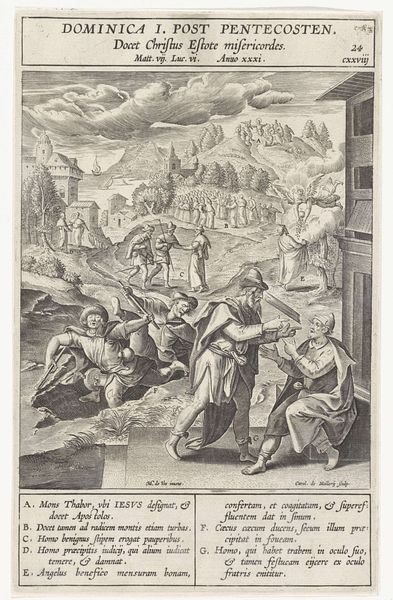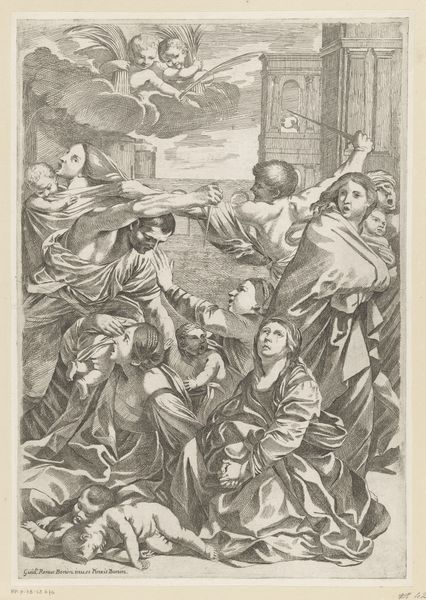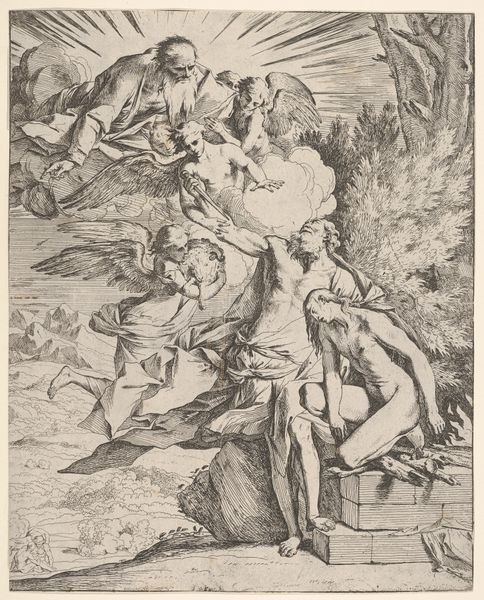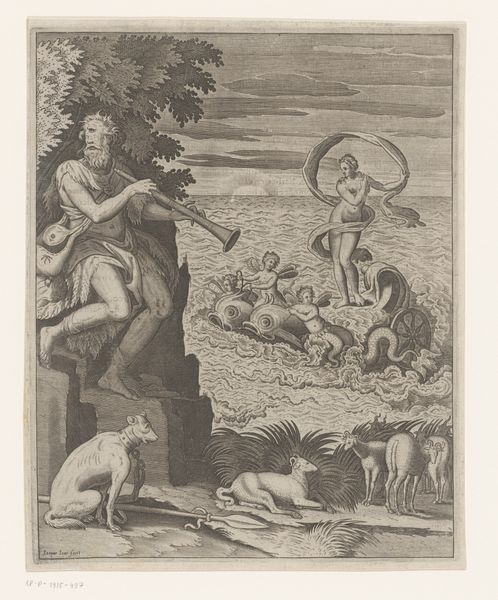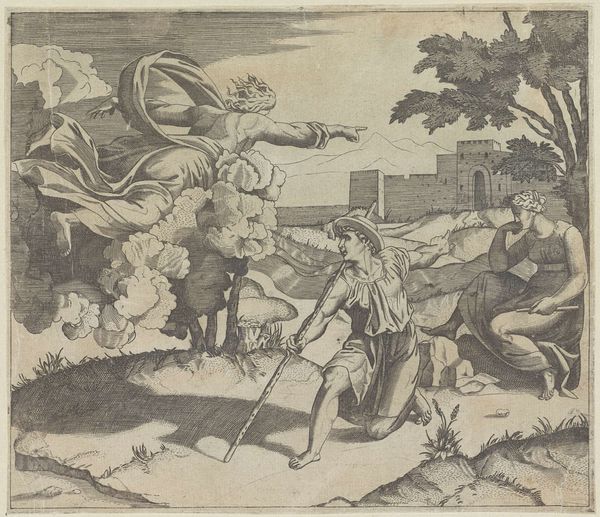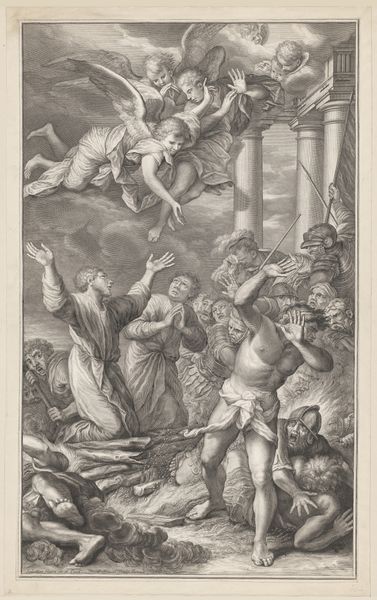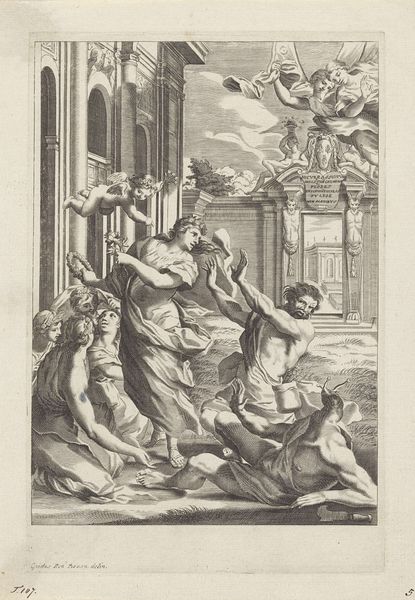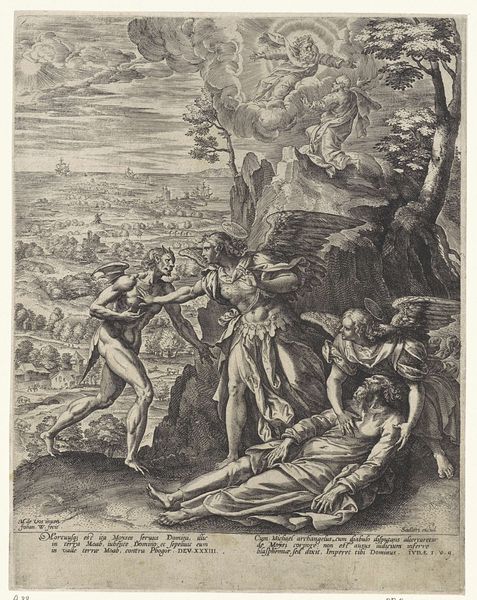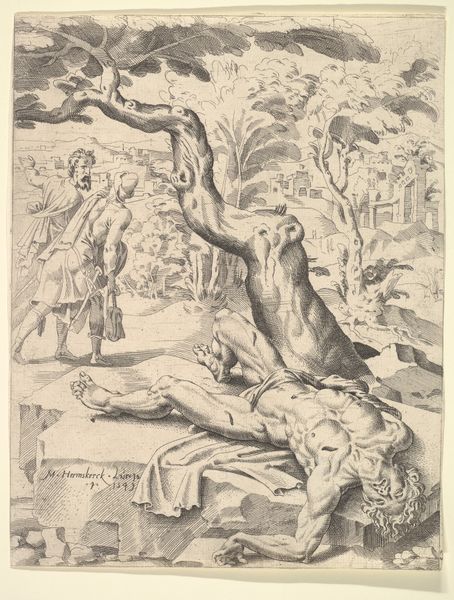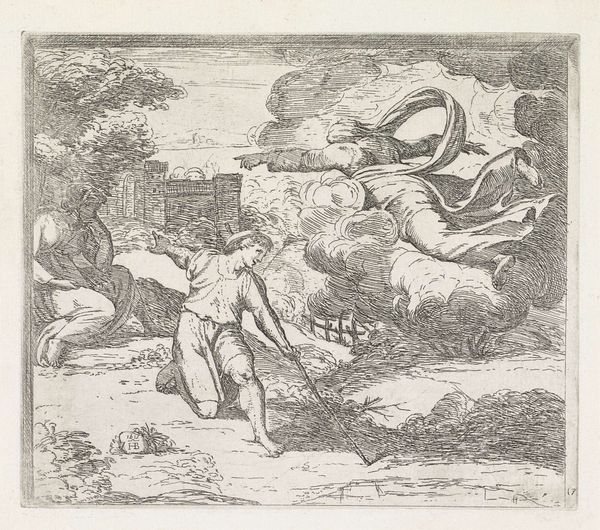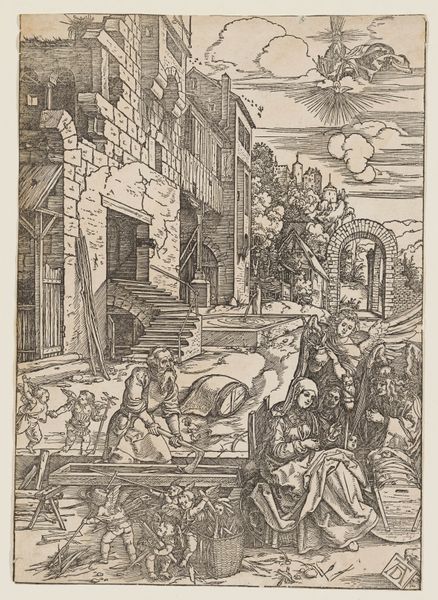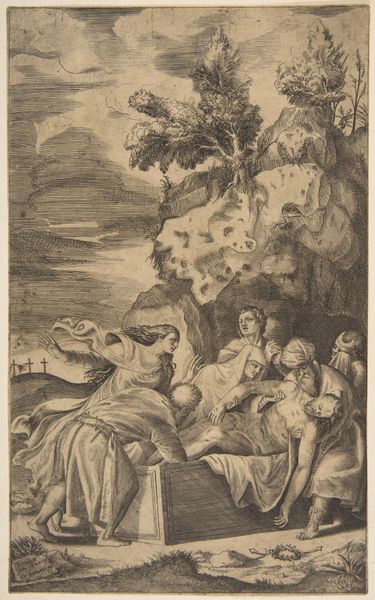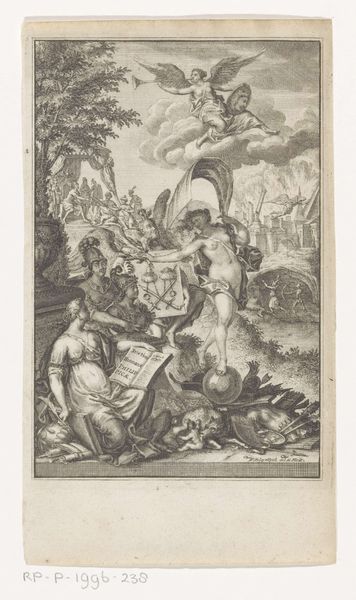
print, engraving
#
narrative-art
#
baroque
# print
#
old engraving style
#
figuration
#
line
#
genre-painting
#
engraving
Dimensions: 235 mm (height) x 173 mm (width) (plademaal)
Curator: Today we are looking at a 17th-century engraving titled "Den fortabte søn som svinehyrde"—"The Prodigal Son as Swineherd." It's by an anonymous artist, part of the SMK collection. And it presents a vivid depiction of, well, the prodigal son in a rather unfortunate situation. Editor: My immediate reaction? It’s quite earthy. The textures conveyed purely through line work! The contrast between the fine details of the swine and the overall grittiness feels, dare I say, incredibly appropriate. It reminds me of the saying about "wallowing in it"—he's literally doing that, isn't he? Curator: Indeed! It's an image steeped in symbolism. The very medium of engraving lends itself to such stark contrasts, doesn't it? Think about the laborious process—the careful cutting, the deliberate inking—each step mirroring the son's slow descent and the grinding reality of his circumstances. The contrast highlights the moral of this genre painting. Editor: It’s interesting that you mention labor. The act of engraving mirrors the very labor the prodigal son is reduced to: a craft that demands both precision and endurance, feeding swine instead of inheriting generational wealth. The consumption involved both literally, in terms of food and gluttony. Curator: Absolutely, it's all very material, isn't it? Notice the crude wooden trough from which the swine are feeding. It's such a contrast to what he has wasted! Editor: The very essence of being human—reduction into tools to create material excess. Think of all those perfectly rendered hairs on the pigs, each tiny engraved line! Even now this work becomes a luxury object that obscures it origins in base labour. It brings new perspective to this common fable! Curator: I agree. It invites introspection on waste, labor, humility, and redemption. This engraving serves as a powerful testament to the era's social mores and the human condition itself, brought into the context of materiality. Editor: A fitting parable rendered in a most revealing and, frankly, stomach-churning form. A deep lesson of consumption, but a clear message about the work ethic!
Comments
No comments
Be the first to comment and join the conversation on the ultimate creative platform.
